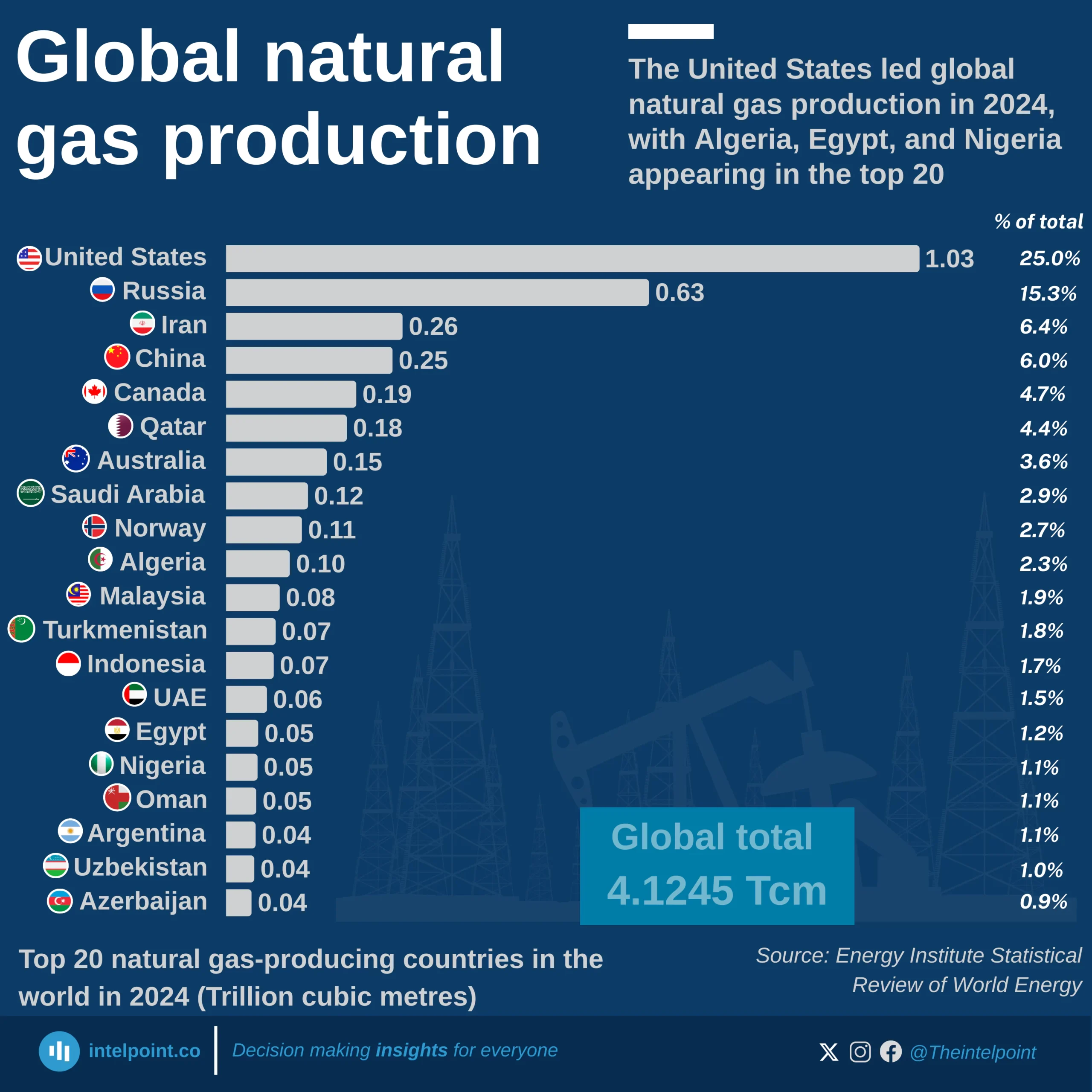The crude oil market experienced a turbulent 2024, following a sharp decline from the highs of late 2023. In September 2023, crude oil traded at $98.16, but by December 2023, prices had dropped to $79.12, signalling a downward trend that continued into 2024. The year began with $82.18 in January and saw fluctuations before peaking at $93.12 in April. A steady decline set in from September ($76.05) to December ($74.72), marking the year’s lowest price. The annual average stood at $82.57, reflecting overall volatility.
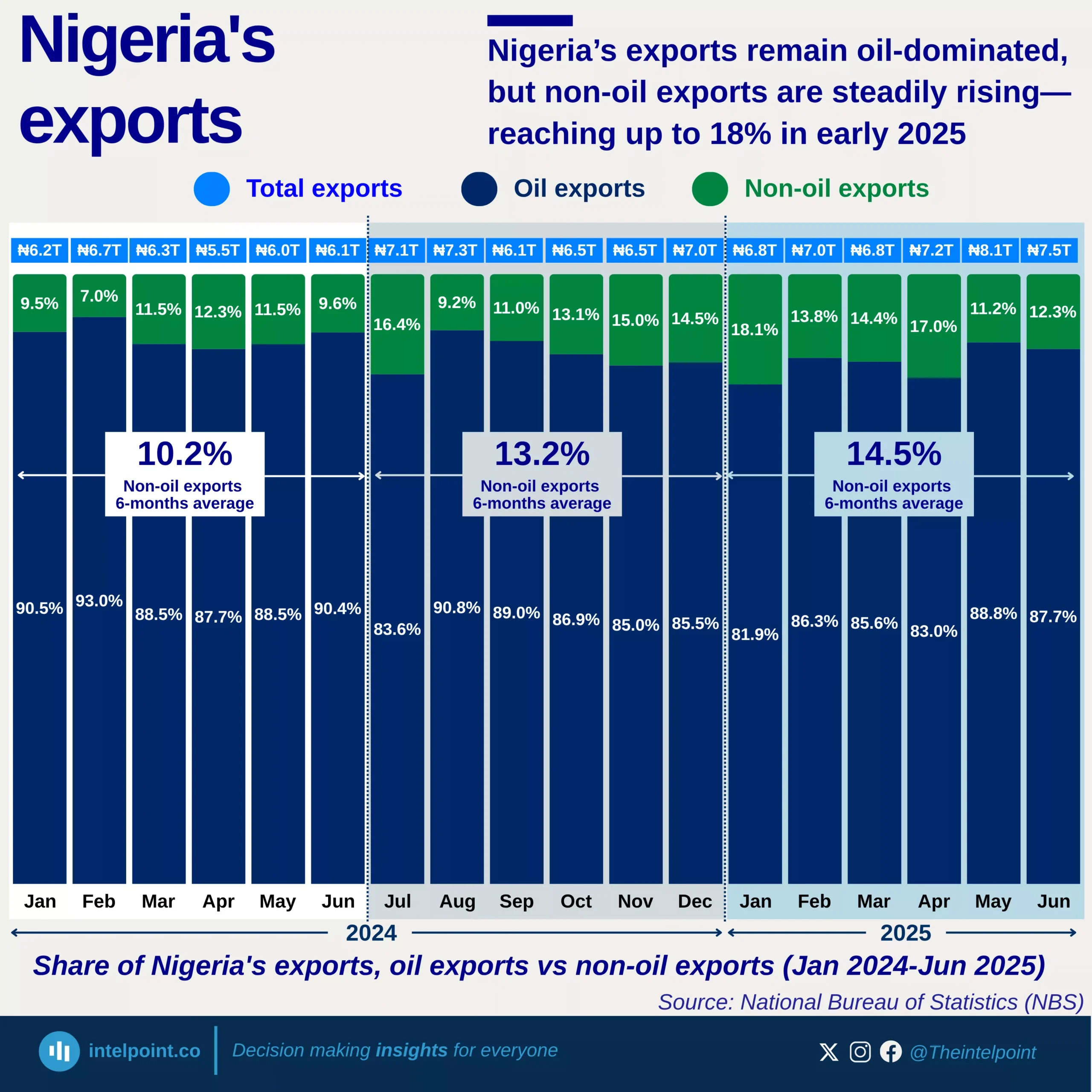
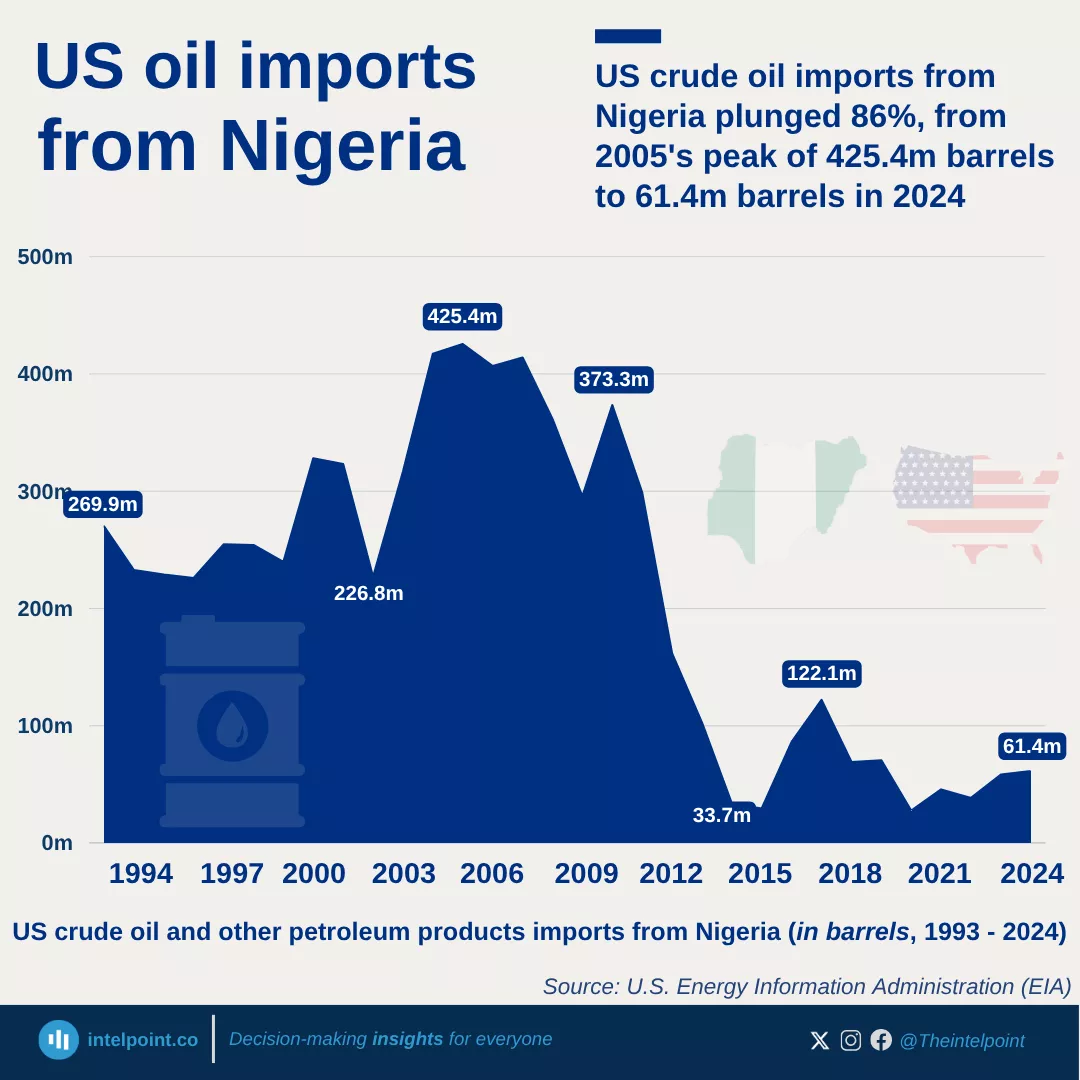
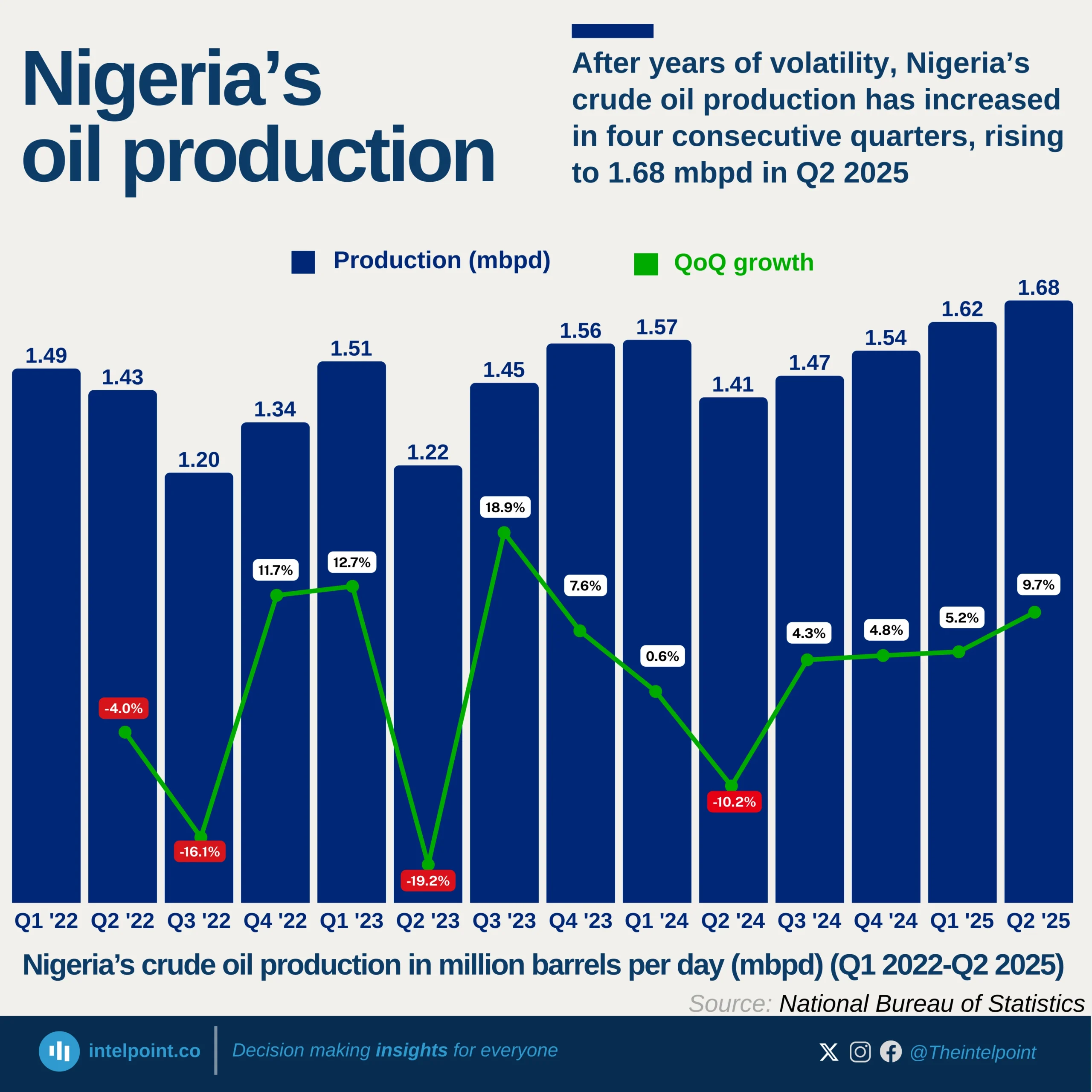
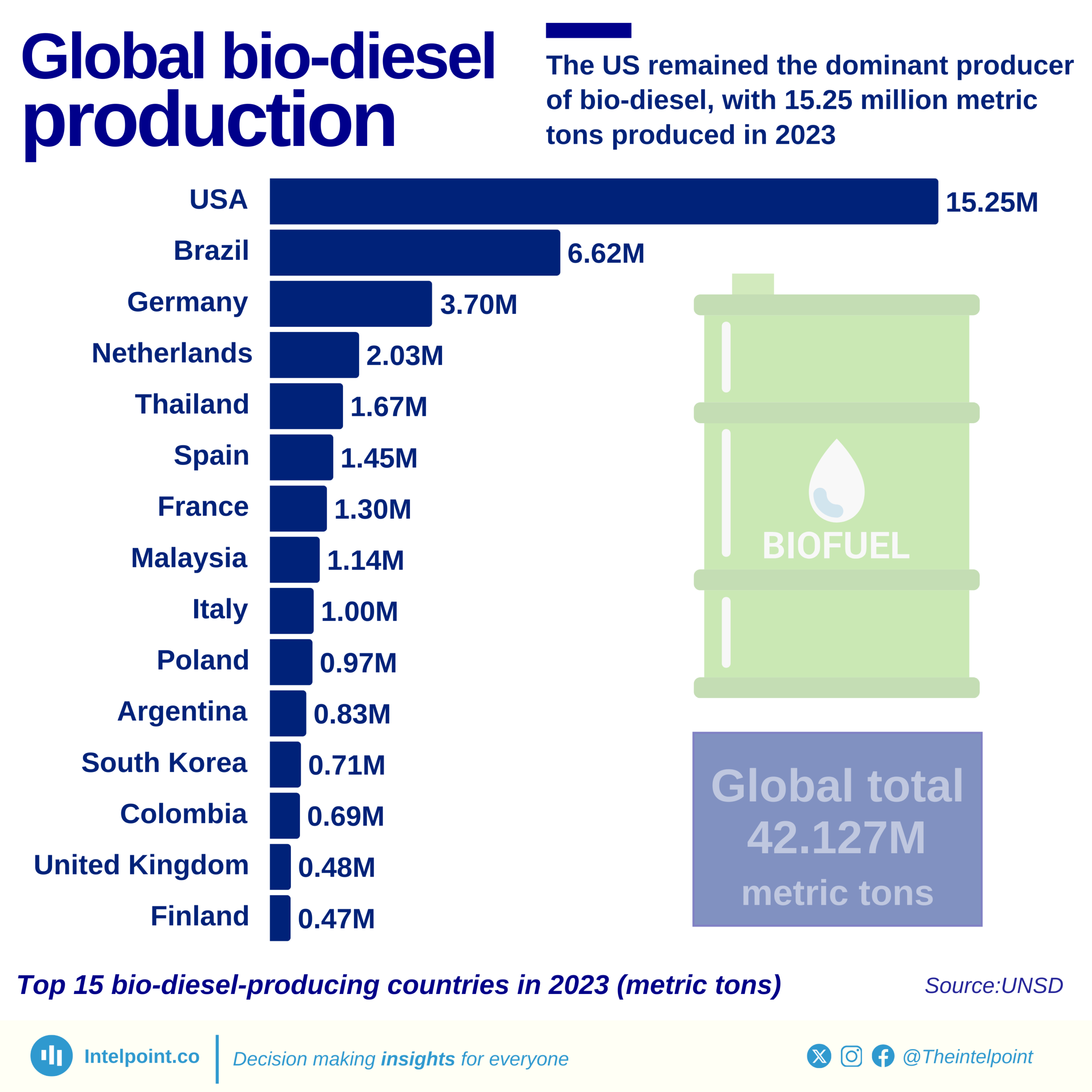
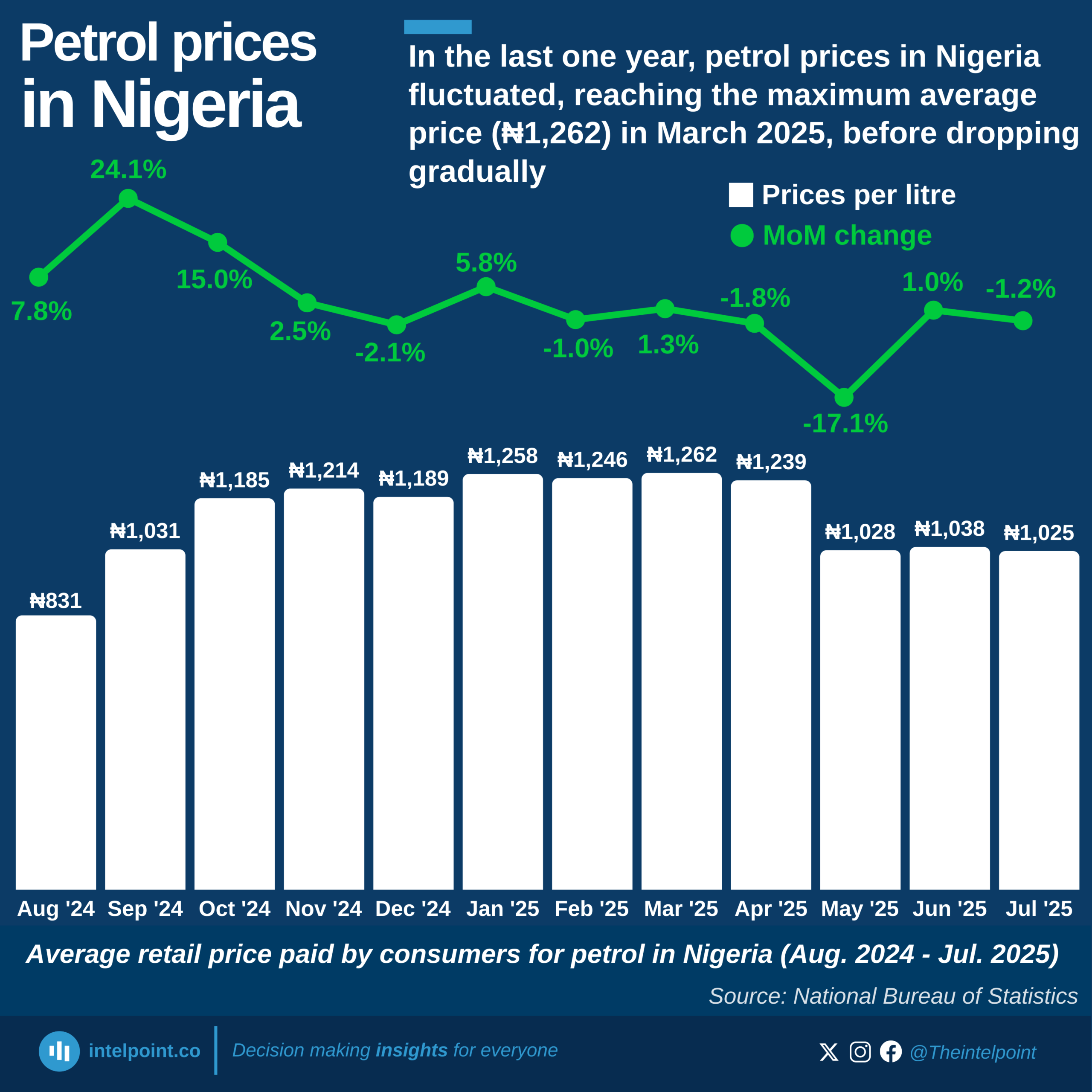
The United States dominates global natural gas production in 2024, contributing 1.03 trillion cubic metres (Tcm), nearly one-quarter of the world’s total.
Russia (0.63Tcm) and Iran (0.26Tcm) follow as the second and third largest producers.
China (0.25Tcm) and Canada (0.19Tcm) also feature strongly, rounding out the top five producers.
Collectively, these top five countries account for more than 50% of global production.
Emerging producers like Nigeria, Egypt, and Azerbaijan contribute significantly to the supply but remain far behind the leading nations.
